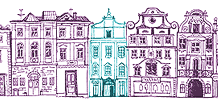Genes Reunited Blog
Welcome to the new Genes Reunited blog!
- We regularly add blogs covering a variety of topics. You can add your own comments at the bottom.
- The Genes Reunited Team will be writing blogs and keeping you up to date with changes happening on the site.
- In the future we hope to have guest bloggers that will be able to give you tips and advice as to how to trace your family history.
- The blogs will have various privacy settings, so that you can choose who you share your blog with.
Official Blogs
Black Friday is an important day in the history of the Suffragette movement. On the 18th November 1910 just over 300 Suffragettes marched to the House of Commons to try and make parliament accept a bill allowing them the right to vote.
Three of these suffragettes, Emmeline Pankhurst, Elizabeth Garrett Anderson and Hertha Ayrton, stood on the steps to one of the entrances to parliament in protest from 1.30 to 3.30pm. They were waiting for the Prime Minister to come and see them but he refused. They stayed there until 6pm.
The other Suffragettes were involved in a mass protest in Parliament Square. During the protest one of the Suffragettes, Ada Wright, fell to the ground. A photograph was taken of her surrounded by Police and a gentleman in a top hat. This photo was then used on the cover of the Daily Mirror the following day with the headline Black Friday.
The police became involved and the Suffragettes were given the option of imprisonment in Holloway Gaol or they could pay a fine. Over 100 of them opted for imprisonment as it was a good way of bringing publicity to their cause.
Whilst they were in prison, the Suffragettes went on hunger strike, which brought about a quick response from the government. The Suffragettes were force fed through a tube that was stuck down their throat with a combination of brandy and milk or raw eggs poured into a funnel at the other end.
Society was deeply shocked by this treatment and the horrors of force feeding became a rallying point for the suffragette cause.
The Suffragettes was a term actually coined by the Daily Mail. It derives from the word 'suffrage' meaning the right to vote. It was used in a derogatory sense for members of the movement for women's suffrage, particularly members of the Womens' Social and Political Union (WSPU). This group was formed at the Pankhurst family home in Manchester in 1903 by 6 women including Emmeline Pankhurst.
The Suffragettes campaigned for the right to vote for women. They did many things for the cause, including chaining themselves to railings, smashing windows and, of course, the Black Friday protest. One Suffragette even died for the cause by stepping in front of the King's Horse at the Epsom Derby in 1913.
The Suffragettes got much sympathy from the public, but the government didn't like this. In 1913 they passed the Cat and Mouse Act to stop this public pity.
At the outbreak of World War 1, with so many men away fighting for their country, this meant women had to take on more traditional male roles. It showed women in a new light and proved what they were capable of. There was also a split in the Suffragette movement with Emmeline Pankhurst and her daughter Christabel requesting that their campaign be stopped while the war lasted.
All the Suffragettes hard work and campaigning paid off. In 1918 Parliament passed the Representation of the People Act 1918. This granted the right to vote to women over the age of 30 who were: householders, the wives of householders, occupiers of property with an annual rent of £5, or graduates of British Universities.
It's hard to believe all this happened only 100 years ago. How times have changed with equal rights being the norm these days.

